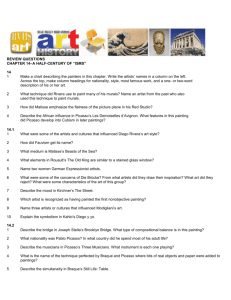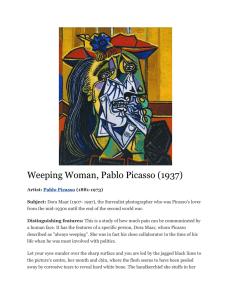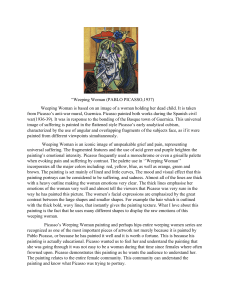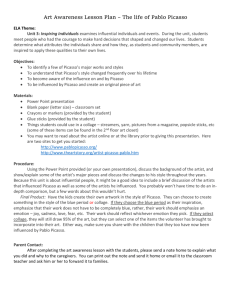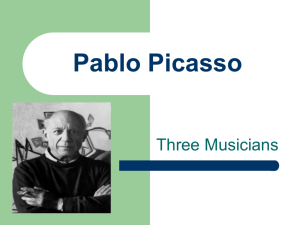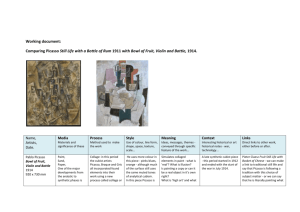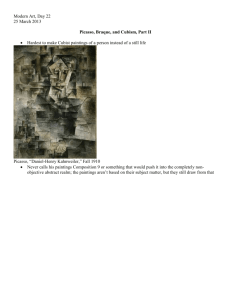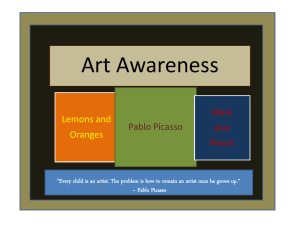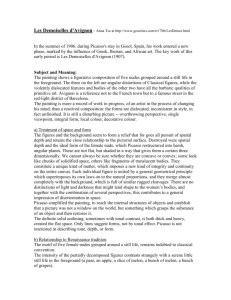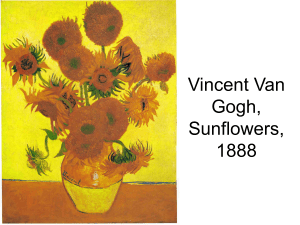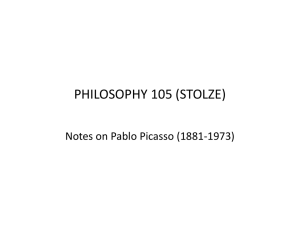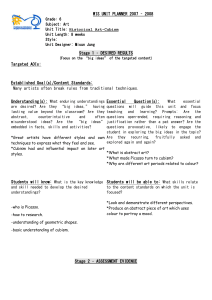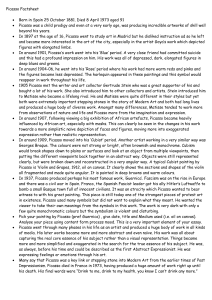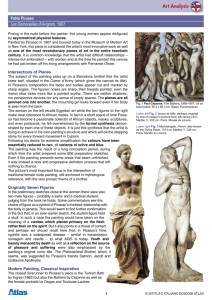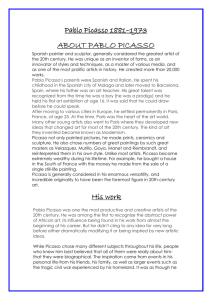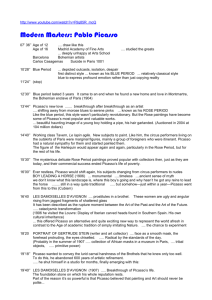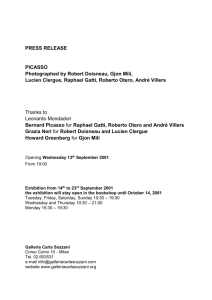Picasso – Weeping Woman
advertisement
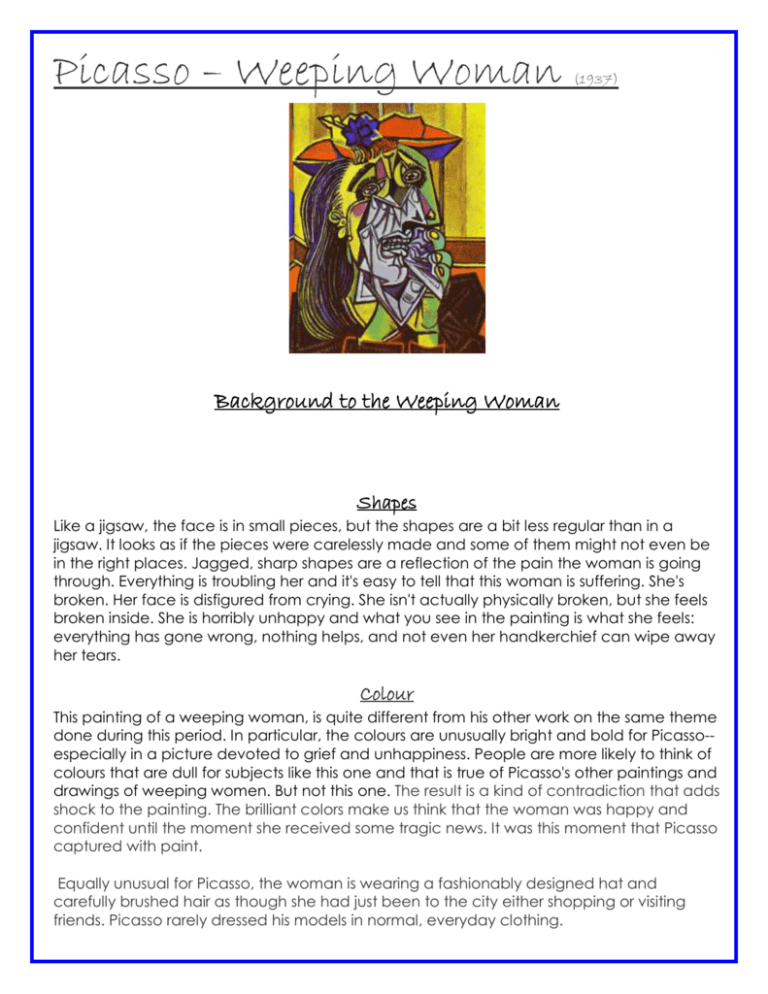
Picasso – Weeping Woman (1937) Background to the Weeping Woman Shapes Like a jigsaw, the face is in small pieces, but the shapes are a bit less regular than in a jigsaw. It looks as if the pieces were carelessly made and some of them might not even be in the right places. Jagged, sharp shapes are a reflection of the pain the woman is going through. Everything is troubling her and it's easy to tell that this woman is suffering. She's broken. Her face is disfigured from crying. She isn't actually physically broken, but she feels broken inside. She is horribly unhappy and what you see in the painting is what she feels: everything has gone wrong, nothing helps, and not even her handkerchief can wipe away her tears. Colour This painting of a weeping woman, is quite different from his other work on the same theme done during this period. In particular, the colours are unusually bright and bold for Picasso-especially in a picture devoted to grief and unhappiness. People are more likely to think of colours that are dull for subjects like this one and that is true of Picasso's other paintings and drawings of weeping women. But not this one. The result is a kind of contradiction that adds shock to the painting. The brilliant colors make us think that the woman was happy and confident until the moment she received some tragic news. It was this moment that Picasso captured with paint. Equally unusual for Picasso, the woman is wearing a fashionably designed hat and carefully brushed hair as though she had just been to the city either shopping or visiting friends. Picasso rarely dressed his models in normal, everyday clothing. Line Bold painted lines mark all areas of the painting, from the parallel curves of the woman's hair to the hat with its flower decoration. But the most noticeable outlines are seen in the face. It is filled with sharp zigzag lines, like shock waves that explode in all directions. The white handkerchief pressed against the face with fumbling fingers has the effect of taking all the color out of her cheeks and yet it doesn't hide anything of the distraught face underneath and the mouth twisted by crying. Even the tears are outlined in black, so they become part of the design. What is perhaps surprising are the blunt shapes of the fingers, which look as though they belong to a man rather than a woman. Picasso's painting of the eyes and nose are also very abstract, especially the thick eyelashes curving all the way around the eyes. The eyes, themselves, seem distorted, as though overflowing with tears. Emotions This very abstract portrait is of a distraught, sobbing woman. She is holding a handkerchief to her tearful eyes, while at the same time gripping part of the handkerchief in her teeth. The woman is fashionably dressed in the style of the 1930s. The abstract divisions of the face made it possible for Pablo Picasso to greatly enhance the sense of the woman's misery in a way that would have been impossible in a realistic portrait. The painting reproduced here is unusual because, for most of his life, Picasso did not show emotions on the faces of people in his pictures. One of the reasons for this change is that Picasso, at the time, was surrounded with sad people and tragic events. Modern art was more abstract than anything that had happened before in Western art, which means that their art did not look realistic. Picasso, together with French artists Georges Braque and Henri Matisse became some of the most important Modern artists and their work influenced artists in all parts of the world.

